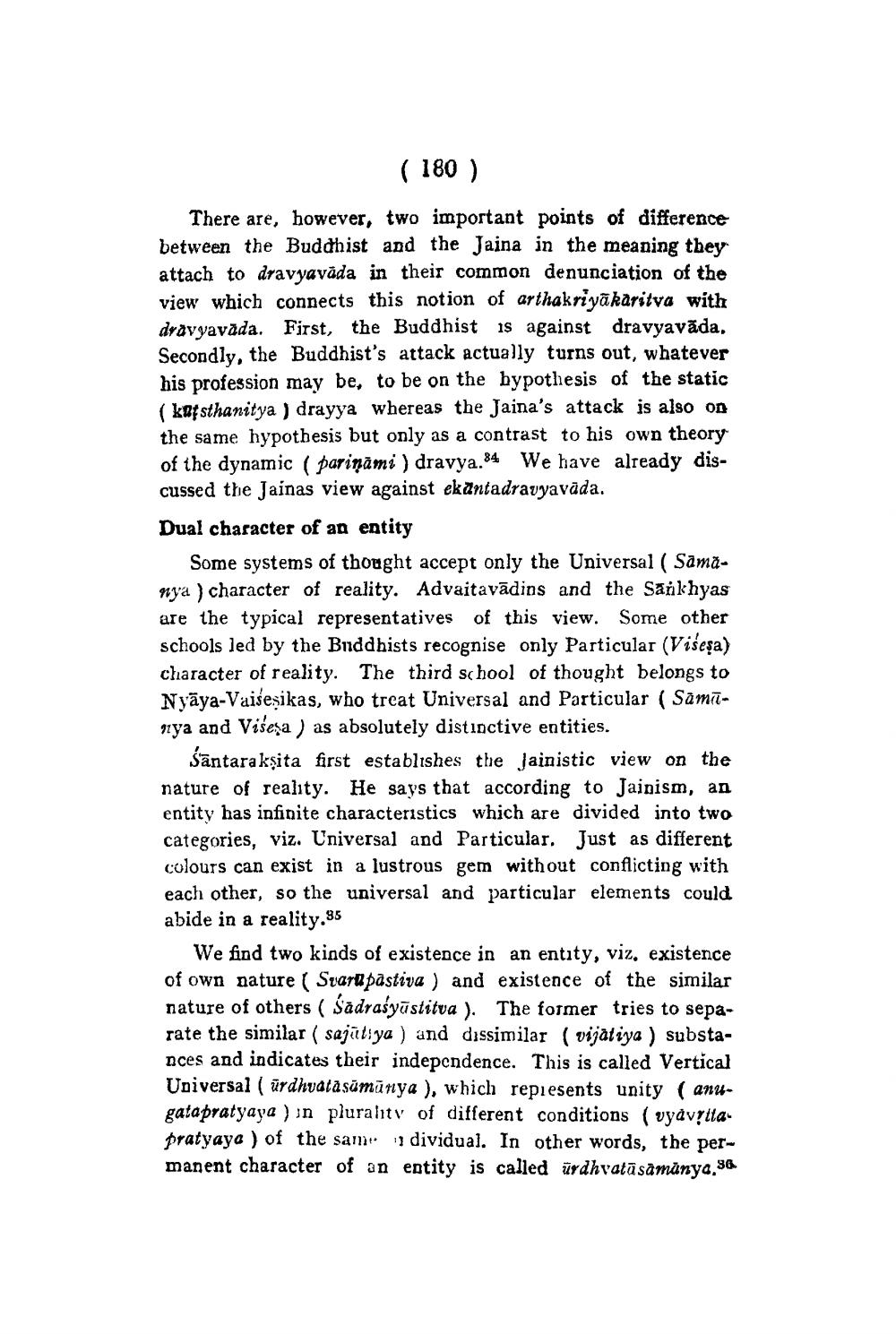________________
( 180 )
There are, however, two important points of difference between the Buddhist and the Jaina in the meaning they attach to dravyavāda in their common denunciation of the view which connects this notion of arthakri yakaritva with dravyavada. First, the Buddhist is against dravyavāda, Secondly, the Buddhist's attack actually turns out, whatever his profession may be, to be on the hypothesis of the static (kaf sthanitya) drayya whereas the Jaina's attack is also on the same hypothesis but only as a contrast to his own theory of the dynamic (pariņāmi ) dravya.84 We have already discussed the Jainas view against ekantadravyavāda. Dual character of an entity
Some systems of thought accept only the Universal ( Samanya character of reality. Advaitavādins and the Sankhyas are the typical representatives of this view. Some other schools led by the Buddhists recognise only Particular (Visesa) character of reality. The third school of thought belongs to Nyāya-Vaisesikas, who trcat Universal and Particular ( Saminya and Visega) as absolutely distinctive entities.
Santara kşita first establishes the Jainistic view on the nature of reality. He says that according to Jainism, an entity has infinite characteristics which are divided into two categories, viz. Universal and Particular. Just as different colours can exist in a lustrous gem without conflicting with each other, so the universal and particular elements could abide in a reality.85
We find two kinds of existence in an entity, viz, existence of own nature (Svaru pastiva ) and existence of the similar nature of others ( Sadraśyāstitva ). The former tries to separate the similar ( sajūtiya ) and dissimilar ( vijatiya ) substances and indicates their independence. This is called Vertical Universal (ürdhvata sumūrya ), which repiesents unity ( anugatapratyaya ) in plurality of different conditions ( vyavsttapratyaya ) of the same individual. In other words, the permanent character of an entity is called ürdhvatāsāmänya.96




